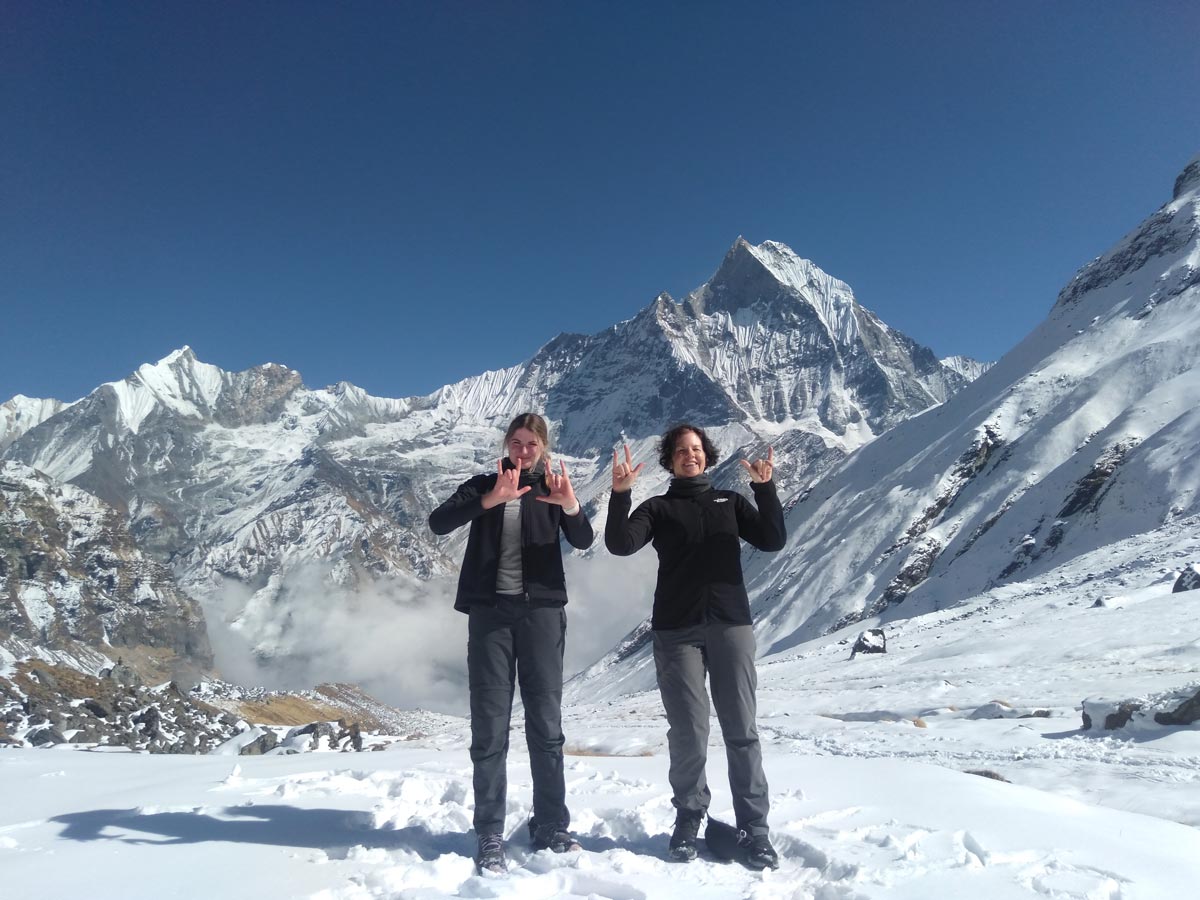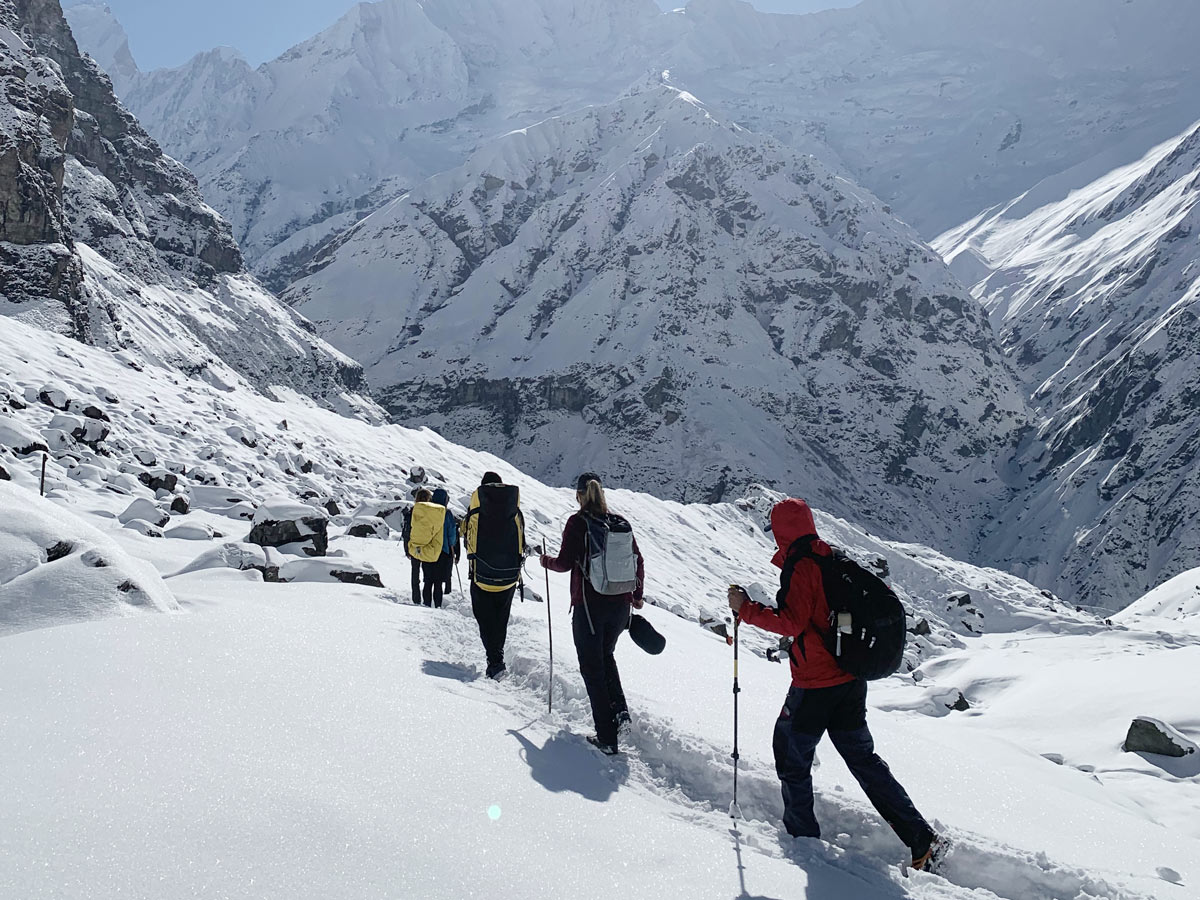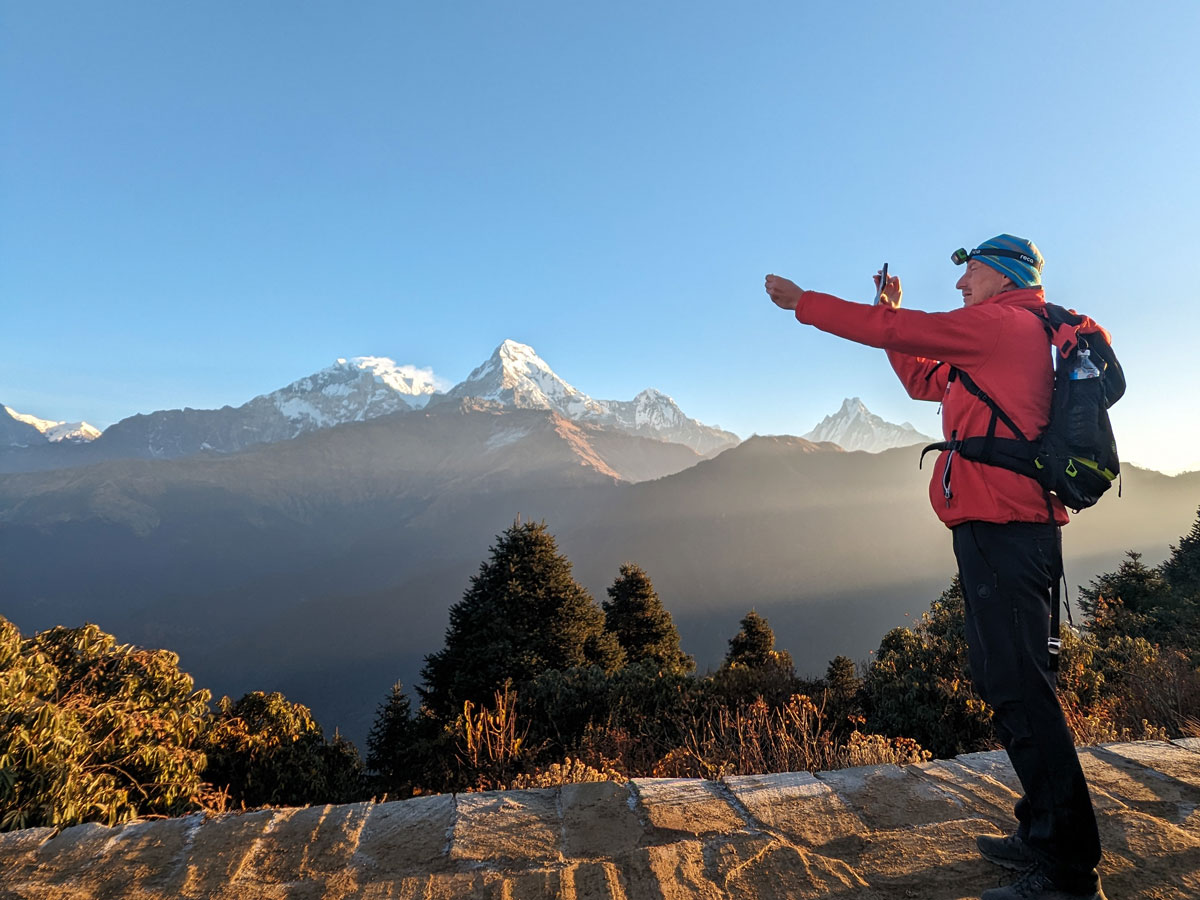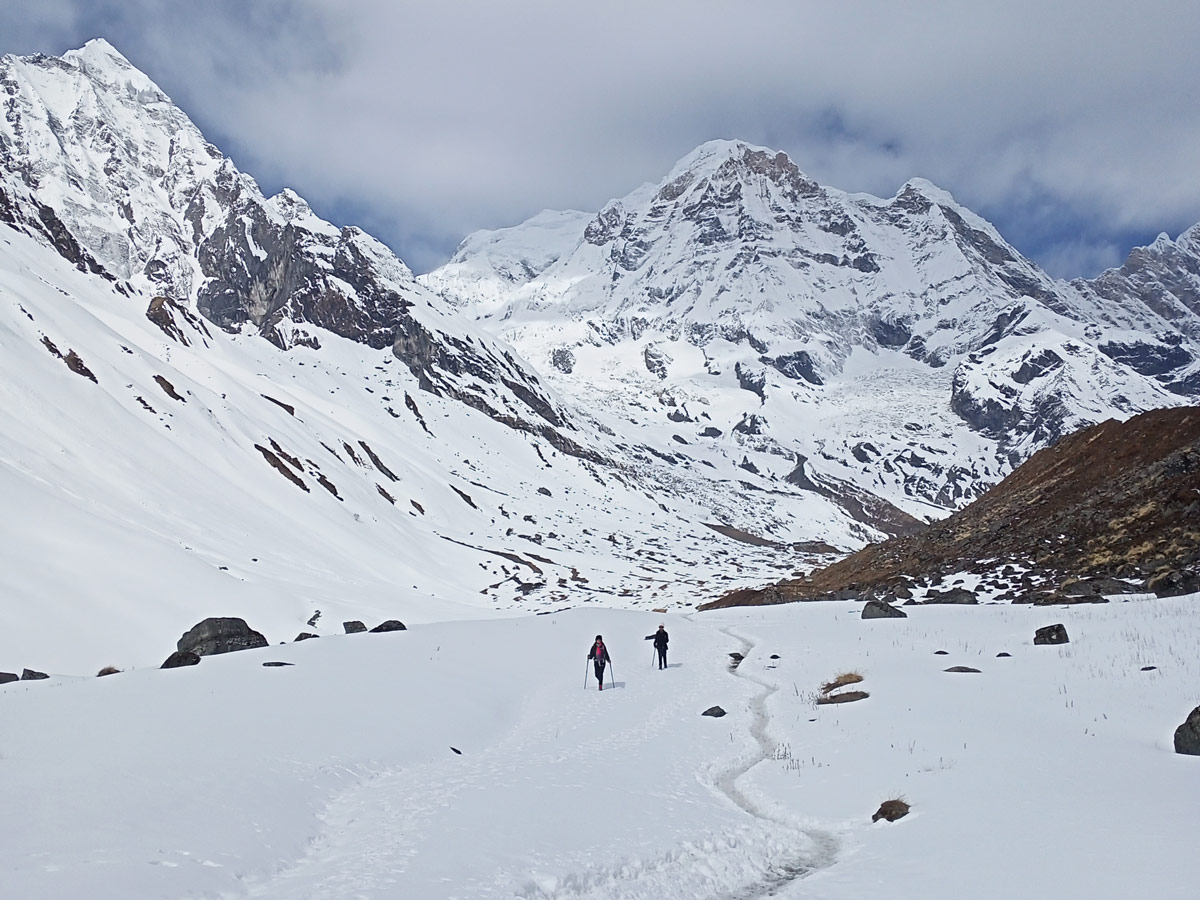The Annapurna region, hailed for its majestic natural beauty and unparalleled views, is home to some of the most popular and adventurous treks. Among those beautiful trekking routes lies the infamous Annapurna Base Camp trek.
Featuring heavenly views and enriching cultural experiences, this trek is a dream destination for people fascinated by the allure of the Himalayas as it takes the trekkers to the foothills of Mt. Annapurna at the amphitheater of nature’s grandeur- the Annapurna Sanctuary.
The Annapurna Base Camp trek is a less challenging alternative as compared to the daunting Annapurna Circuit trek. Despite being only moderately challenging, the difficulties of the ABC trek cannot be overlooked for an exemplary and convenient trekking experience.
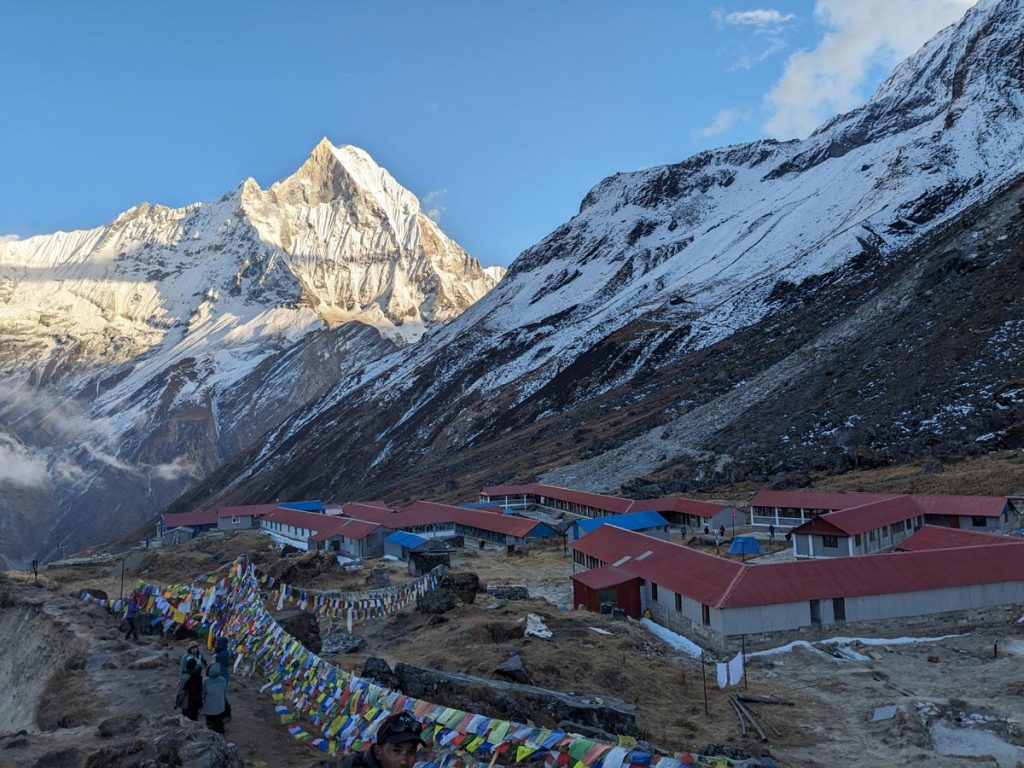
However, the lack of comprehensive information regarding what difficulties the trek unfolds causes most of the trekkers to be surrounded with questions and trepidation of ‘What Ifs’.
Therefore, in this detailed blog, we have compiled a comprehensive list of all the challenges awaiting you on the ABC trek allowing you to prepare well and convert your anxiety into a feeling of accomplishment as you conquer the trek.
What is the overall difficulty level of the Annapurna Base Camp trek?
The Annapurna Base Camp trek comes under the moderately challenging trekking trails in Nepal as it doesn’t unfold challenges that are beyond doable for both beginners and seasoned trekkers.
This trek too features significant challenges in terms of distance, duration, altitude, terrain, accommodation, and a few others.
The trekkers need to walk for 5-7 hours every day while covering around 8 kms for 7-11 days straight. Along the way, they ought to cross several landscapes and at times steep ascents, descents, and most importantly uncountable stone stairs.
While it might sound daunting at a cursory glance, the challenges of the ABC trek can be tackled by proper preparation, steady ascent, and good physical fitness.
Distance and Duration
While you are on the ABC trek, distance is not just a number. Distance is the highlight when it comes to the factors determining the difficulty of this trek.
Varying from itinerary to itinerary, the standard distance of the Annapurna Base Camp trek is approximately 110 kms that is usually completed between 7-11 days.
Although the distance of this trek is short as compared to the other long-distance treks, it still requires the trekkers to walk for at least 5-7 hours every day as they ought to cover 8 kms at an average on a daily basis.
It is important to be physically prepared while focusing on endurance and cardiovascular strength to help you with the long hours of walking. Having regular practice of long-distance walking can help you be prepared to tackle the difficulties related to distance during the trek.
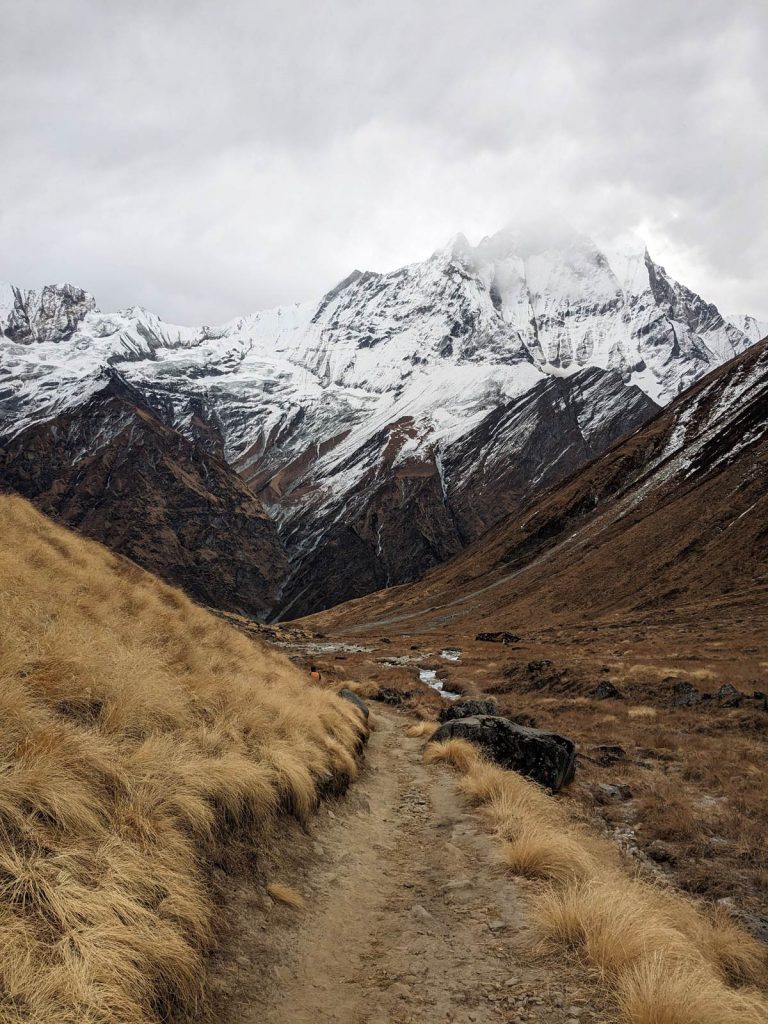
While completing this trek in shorter span of time is possible by covering more kms per day, it can be daunting, especially for novice trekkers as it is slightly easy for experienced trekkers to cover the daily distance sooner.
For slow or first-time trekkers, it is important to keep in mind that trekking isn’t a race. The itinerary includes ample time facilitating for you to walk slowly and take multiple breaks and still make it to the destination.
Therefore, if you are a beginner in the world of trekking, it is advisable to opt for a relaxing itinerary featuring a greater number of days. It is better to add a day to the itinerary than to miss out on enjoying the true essence of the trek due to tiredness.
Altitude
Most of the itineraries for the Annapurna Base Camp trek begin in Pokhara at an altitude of 900 m and take you at the maximum elevation of 4,130 m at the Annapurna Base Camp within a matter of 4-5 days depending on the route.
Although this 3,230 m difference in elevation is not as dramatic as some of the other treks, it can still be challenging, especially for people hailing from lower altitude regions. As the air thins and the level of oxygen drops, there are always the chances of being hit by altitude sickness.
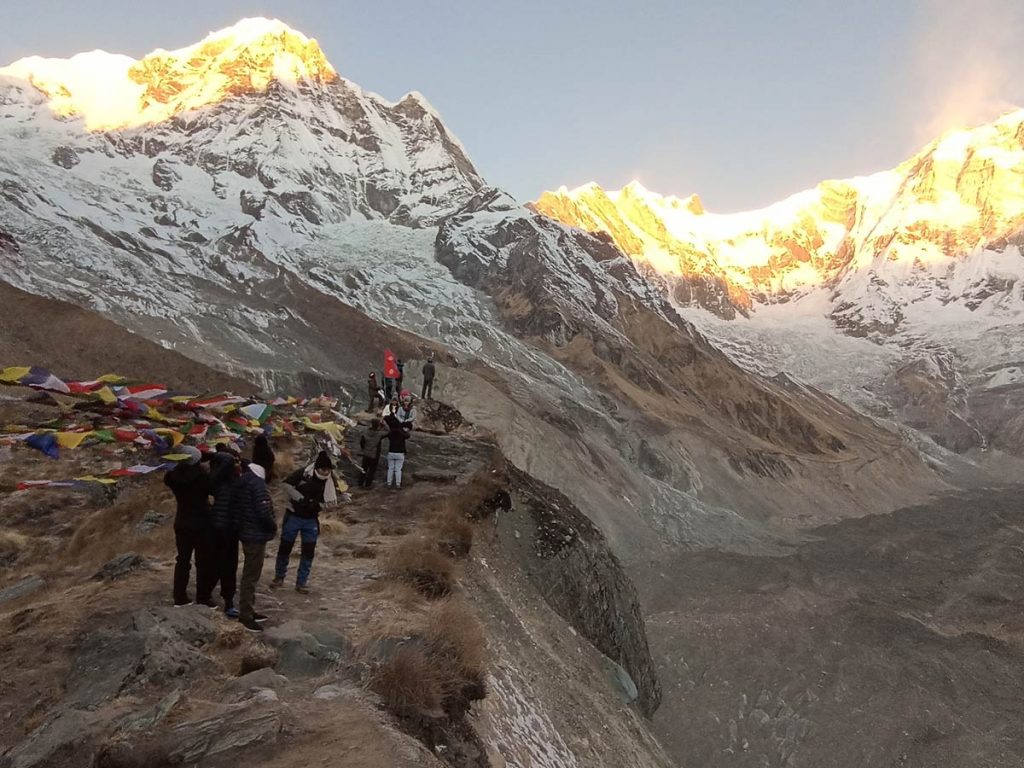
Symptoms of Acute Mountain Sickness like headache, nausea, fatigue, can hit you as you traverse in the realm of thin air. To prevent altitude sickness, you must ascend gradually and allow your body to adapt.
As the altitude is not very high, the ABC trek doesn’t require you to dedicate an entire day for acclimatization. Incorporating small detours along the trail like a hike to Poon hill (3,210 m) is enough acclimatization to shield you.
Walking slowly on the trail and being hydrated throughout the trek is the key to keeping altitude sickness at bay.
However, if the symptoms persist, worry not as the trail has enough lodging options for you to rest, acclimatize, and continue your journey on the next day.
Terrain
As you set about towards the backcountry of Nepal in the Annapurna region, the ABC trail traverses along a variety of landscapes featuring twists, turns, and other challenges. This trek is undulating in nature and requires the trekkers to climb up and descend back more often.
While the trail of the Annapurna Base Camp trek is not as challenging as other mountainous trails, it does demand proper preparation given its moderately challenging nature. Although the trail ascends gradually, some sections of the trek also feature sharp ascents and descents.
The trek features uncountable and steep stone stairs, especially in the lower altitudes around Ulleri, Chhomrong, and Tadapani. Both climbing and getting down these stairs can be knee jerking at times.
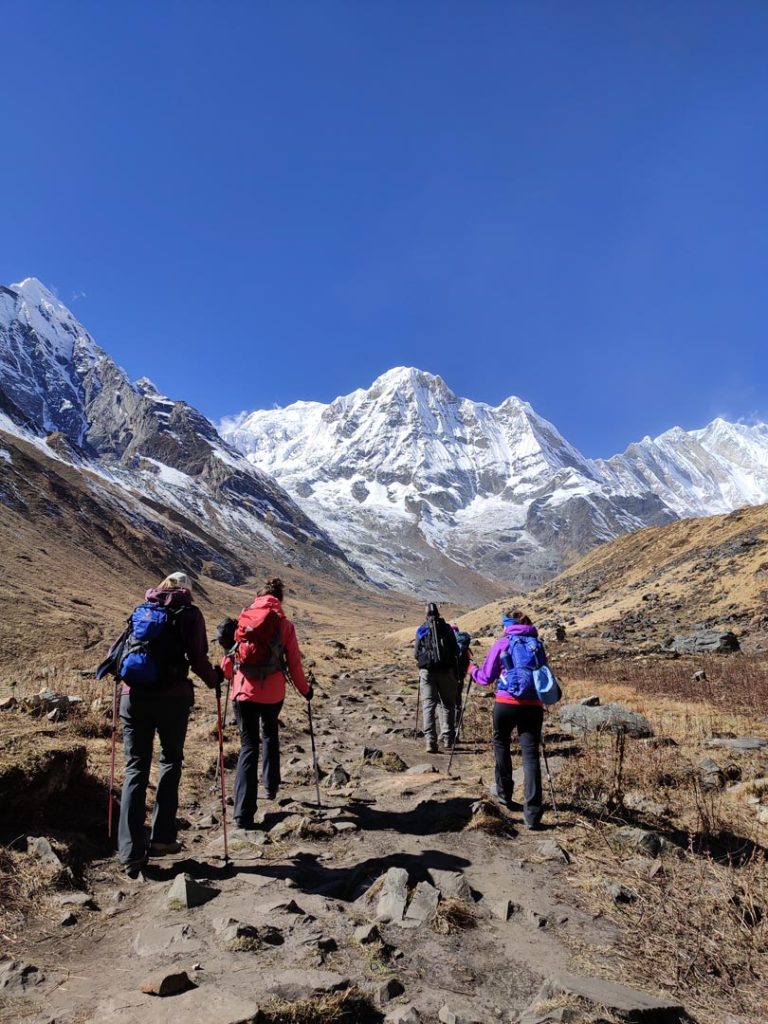
The challenges related to terrain while navigating the ABC trek can be tackled with slow pace and adequate preparation in terms of gear as well as physical strength, especially leg strength.
Although the trek doesn’t demand a high level of physical fitness, it still requires you to be in good shape at least so that you can enjoy your trekking experience rather than just dragging your feet till the end.
While careful footing helps you climb the stairs with efficiency, proper hiking boots and prior practice of stair climbing with a weight comes in equally handy to prevent any kind of mishap like slipping given the uneven nature of the stairs.
Hiking practice goes a long way as it gives you a taste of having sore muscles. This is important because most people might be able to handle the walking part well but often dread the pain it brings at night due to sore muscles.
Trekking Experience
The Annapurna Base Camp trek is a moderately challenging trek, therefore not compulsorily requiring prior trekking experience. However, having prior experience makes the ABC journey more comfortable and enjoyable for the trekkers.
This comes from the trekkers being aware of and at times used to the food in the Himalayas of Nepal, the culture of the locals, and having prior experience of navigating the trails.
Beginners can embark on the ABC trek, but they require more preparation and guidance as compared to the seasoned trekkers.
Accommodation
The ABC trek features numerous options for accommodation, owing to the popularity of the trek. However, most of these options are rather basic.
You will not have access to your familiar luxury throughout the duration of the trek as the teahouses feature basic amenities.
Twin shared rooms are available in all places except for ABC. However, at times like during the peak season, you might have to adjust with triple sharing or even dormitory style rooms in more local villages/areas deep in the trail.
Availability of facilities like Wi-Fi, hot showers, and attached bathrooms depends on the location as well as the trekkers traffic, and usually costs extra charges.
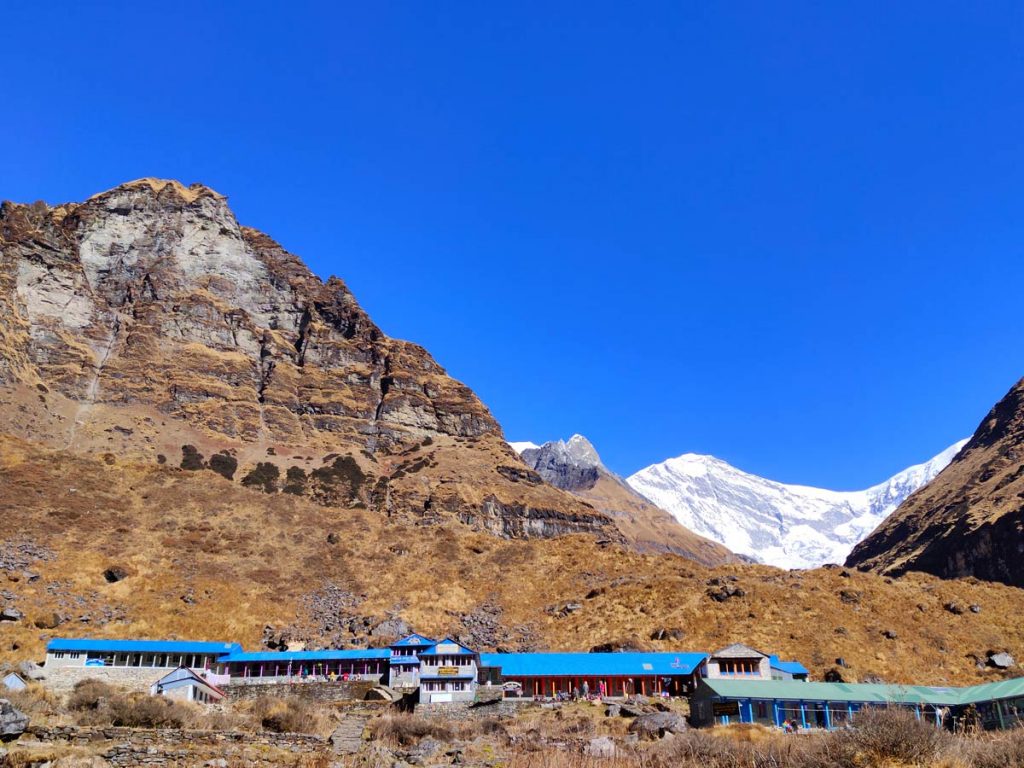
Especially during peak trekking seasons, getting luxury accommodation can be a challenge in the absence of prior booking.
Hence, be prepared with your gear as you must tackle the freezing temperatures of the trail without facilities like pre-heated rooms. Your sleeping bag comes in handy to tackle these challenges along the ABC trek.
Although preheated rooms might not be available, most of the teahouses starting from Chhomrong usually have a fireplace in the dining hall to keep the trekkers warm.
This fireplace is absent in places like Himalaya, Deurali, and ABC. However, you will find a replacement like kerosene heaters if the temperature goes very low.
Weather
Be prepared for the extremes as you plan to embark on the ABC trek as the weather in the Annapurna region is as dynamic as it could get. Like all the treks in the Himalayas, the ABC trek also features uncertain challenges in terms of weather.
Although the broader picture of weather in the ABC trek is determined based on the season and month, the specificity of what the trek might unfold become less and less predictable. From scorching sun amidst the Himalayas to a sudden downpour or snowfall, one can expect anything.
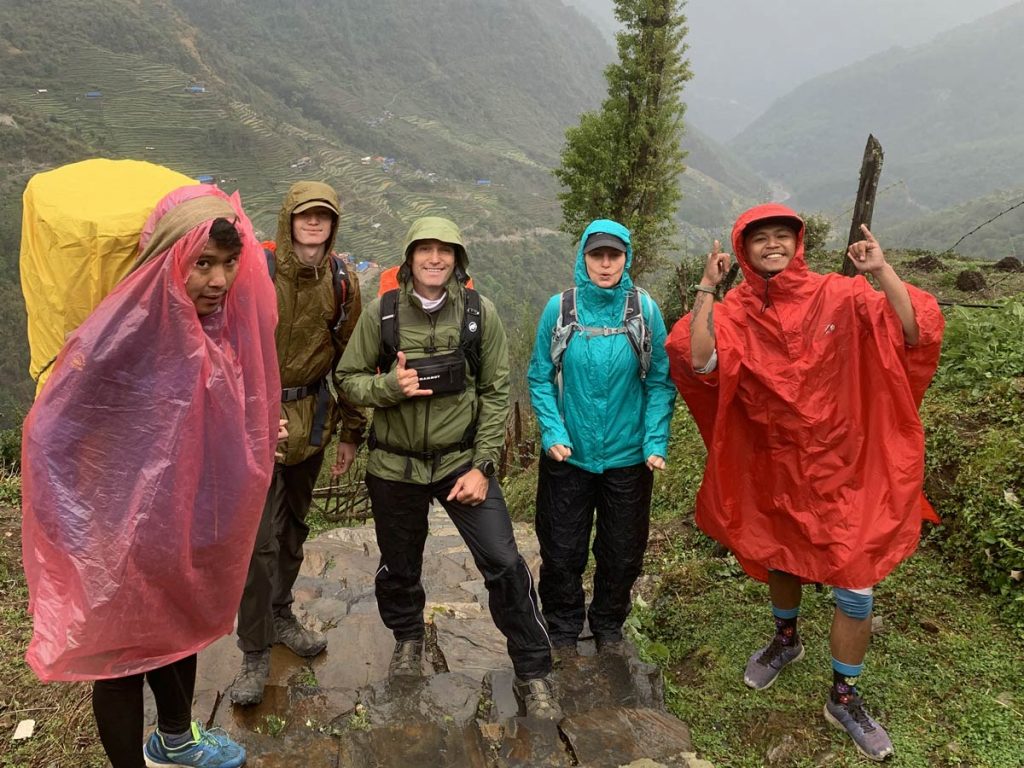
The trail can present many challenges related to weather, especially in the months bringing monsoon to Nepal. The rainfall makes the ABC trail slippery and wet, making it difficult to climb the endless stairs and increasing the risk of slipping and injury.
Monsoon also brings along numerous leeches on the trail making it a challenging experience. Be prepared with a gaiter to keep your lower body covered and insect repellants for added protection.
As the trail traverses through many forests, chances of landscapes are also increased during monsoon. The unpredictable rainfall also causes inconvenience to the trekkers amidst the chilly weather in the Himalayas.
If you are planning to conquer the ABC trek during winters, be prepared for possible frost bites in the extreme temperatures dropping below the freezing point as you go to higher altitudes. The chances of heavy snowfall along with avalanche also increases.
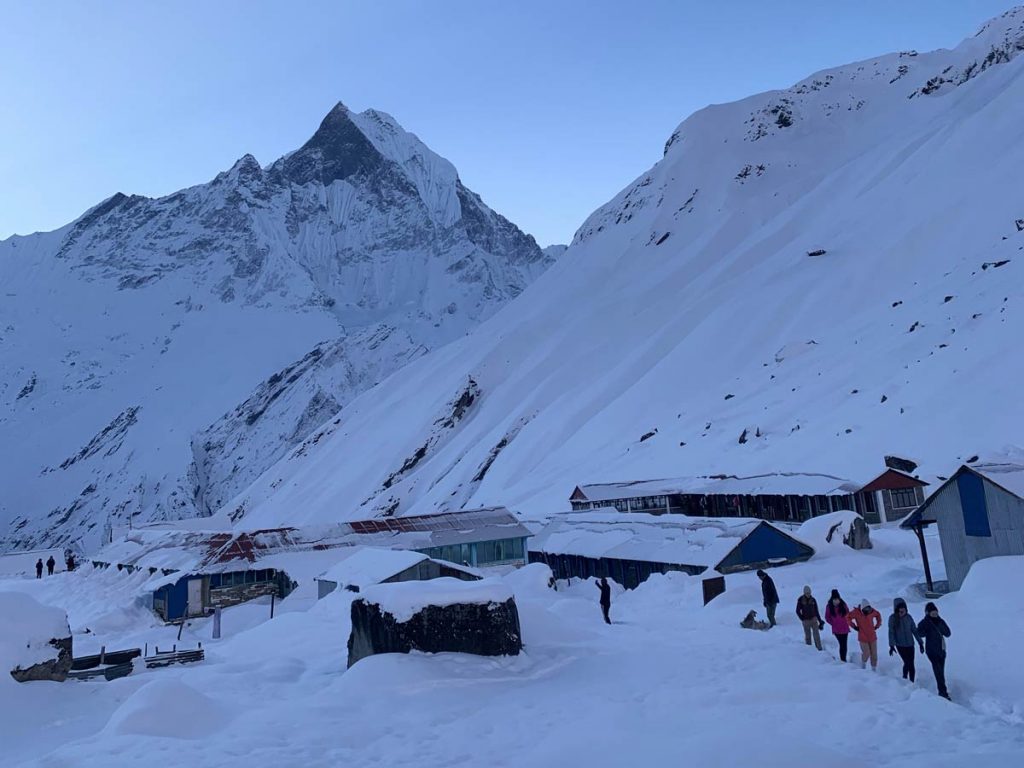
Therefore, make sure to carry along crampons, ice cleats, and proper snow gloves to make your experience more comfortable and warmer.
While the ABC trek is accessible all year round, the perfect season for trekking in this region is spring (March to May) and autumn (September to November). These months give you a chance to explore the true essence of the Annapurna region in all its might.
During the peak trekking seasons, the trail is adorned with blooming flowers and your canvas is painted with a tandem of white snowcapped peaks along with hues of greenery and other beautiful colors of the flowers.
If you are someone who prefers a rather quiet trekking experience, you can opt for monsoon and winter as the trekkers’ traffic is comparatively low during these seasons. However, be prepared with appropriate gear and clothing to conquer the trek hassle free.
Mental Endurance
While physical challenges are what make up most of the factors determining the difficulty of the ABC trek, the mental fatigue caused by this multi-day trekking cannot be overlooked. As you cross the challenging and rugged terrains of the trek, the journey becomes beyond mere physical grit.
The fatigue caused by the overall trek combined with the sore and aching muscle day after day, that too in the absence of your familiar faces or your familiar comfort can for sure take a toll on your mental stamina.
Therefore, make most of the Wi-Fi and data connections on the trail to remain connected to your loved ones to keep your spirit going and your heart warm amidst the freezing mountains.
The discomfort and the unpredictable nature of the trail can introduce psychological challenges to your trekking adventure, at times making you question your ability to continue.
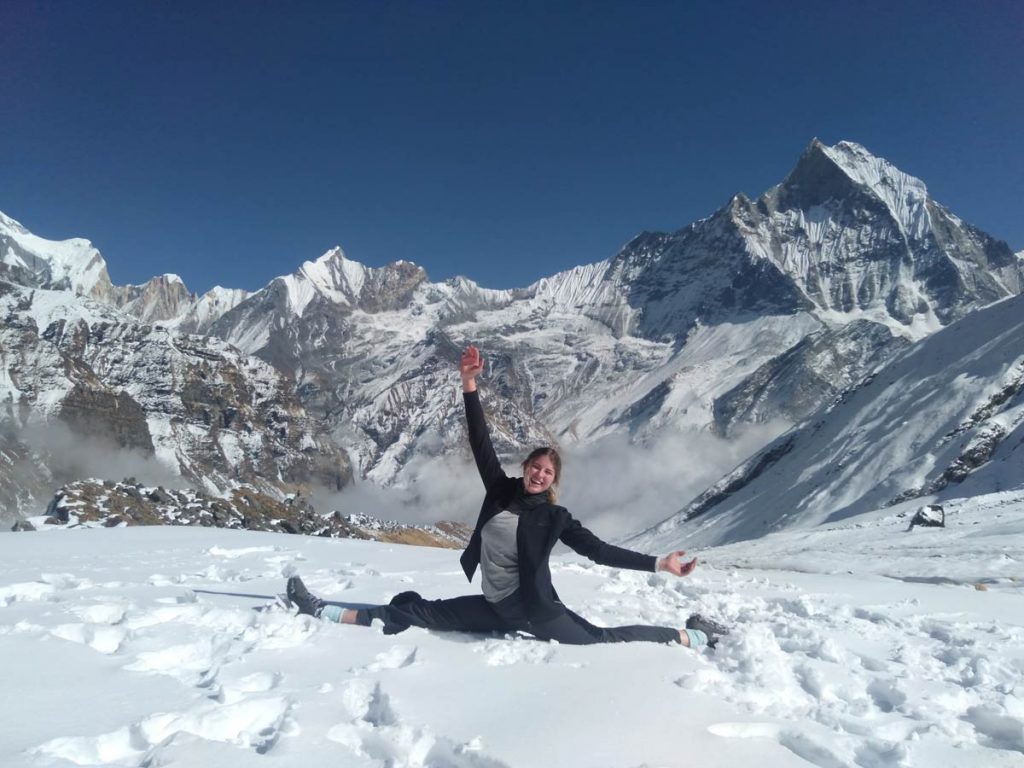
In these circumstances, it is crucial that you remember and visualize the reward that awaits you at the Annapurna Base Camp in the form of world class panoramas.
Practicing mindfulness and drawing inspiration from your fellow trekkers if you are in a group can always add to your mental strength and help you conquer the trek.
Carry along some good books or board games to keep your mind occupied as you traverse the trek. Playing cards can be a good activity to indulge in. You can also carry a journal to record your experiences along the trail.
